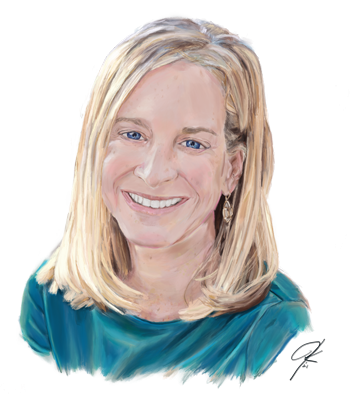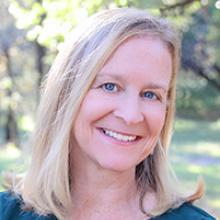Meet the Expert: Kathleen Murphy

Kathleen Murphy, Ph.D., is a principal investigator for AIR’s Center on Knowledge Translation for Disability and Rehabilitation Research. She also directs a research portfolio of surveys and training related to cancer and employment in collaboration with the Southwest Americans with Disabilities Act Center. Dr. Murphy is a former vice president of NARRTC (formerly known as the National Association of Rehabilitation Research and Training Centers) and now serves on its executive committee.
POSITION: Principal Researcher, Lead of AIR’s Individuals with Disabilities Practice Hub
AREAS OF EXPERTISE: Knowledge Translation, Disability Employment, Cancer and Workplace Issues
YEARS OF EXPERIENCE: 25
Q: Over your time in the field, how have the challenges and opportunities for individuals with disabilities changed? What has stayed the same?
Kathleen: There have been marked improvements—for example, wheelchair access has greatly increased over the last couple of decades, and students with disabilities are now integrated into regular classrooms as much as possible.
One of the biggest challenges to ensuring that people with disabilities are included in all aspects of life continues to be employment. The employment rate of people with disabilities remains consistently lower than it is for people who don’t have disabilities. There are many reasons for that—everything from employers’ fears to logistical barriers like the absence of reliable transportation.
The pandemic may inadvertently have helped to change attitudes and open opportunities. Almost overnight, telecommuting became standard at many companies, including some that were reluctant to allow it before. A work-from-home option helps employees manage personal care issues, allows for flexible schedules, and, of course, eliminates transportation issues. If telework becomes a permanent option, that could benefit people with disabilities. However, employers need to ensure that remote collaboration platforms are accessible to people with disabilities.
Q: What are some common misconceptions related to disability employment?
Kathleen: One common misconception is that individuals with disabilities can't work. This stems in part from the way people qualify for some disability-related benefits, though in fact, even that is not a hard-and-fast rule. There are ways that even individuals receiving federal disability-related supports can continue to earn some income. In addition, there are of course many people who have disabilities just going about doing their jobs—like others who don’t have disabilities—who have never received governmental disability benefits.
Sometimes employers assume that the cost of accommodations will be astronomical, and will involve modifying facilities or buying technology....In 2020, over half of accommodations cost nothing, and the average cost of the rest was less than $500 each. Sometimes an employee just needs a schedule change, or a stool to sit on.
Another misconception is that all disabilities are visible. Disabilities aren’t always accompanied by a wheelchair, cane, or hearing aid. Non-visible disabilities include depression, PTSD, or a learning disability, just for a few examples.
Sometimes employers assume that the cost of accommodations will be astronomical, and will involve modifying facilities or buying technology. “Accommodation” refers to an adjustment that’s needed in the workplace, or a modification to the way the work is done, that helps accommodate a disability-related issue so people can do their jobs most productively. According to the Job Accommodations Network, funded by the U.S. Department of Labor’s Office of Disability Employment Policy, in 2020, over half of accommodations cost nothing, and the average cost of the rest was less than $500 each. Sometimes an employee just needs a schedule change, or a stool to sit on.
Q: What trends or topics in your field should people pay attention to over the next 5-10 years?
Kathleen: For better and for worse, we can safely assume that technology will continue to have a huge impact in the workplace for individuals with disabilities. For example, employers are increasingly using automated procedures on platforms and websites that aren’t accessible, or algorithms that systematically screen people with certain disabilities out, even when those disabilities are unrelated to the job. This very concerning practice has already been brought to the attention of the U.S. Equal Employment Opportunity Commission by some members of the U.S. Senate.
On the other hand, self-driving cars, rideshare apps, accessibility features on phones and computers, and other incredible technological advances show promise in helping people with disabilities overcome long-standing barriers to work, like lack of transportation. Another workforce trend that we can anticipate relates to aging. As workers get older, more of them acquire disabilities, including musculoskeletal issues, cancer, diabetes, and so on. So, as the American workforce ages, the number of people with disabling conditions will rise with it.
Q: You are the principal investigator for AIR’s Center on Knowledge Translation for Disability and Rehabilitation Research (KTDRR). What does knowledge translation mean to you?
Kathleen: In short, knowledge translation gives research and development projects their practical value. For context, in my first professional job, I worked on Capitol Hill as a legislative research assistant. When I met with lobbyists or reviewed information sent to the senator, I kept an eye out for research that was easy to understand and that clearly back tied to an action he was positioned to do—research that my boss could actually use to affect policy decisions. Later, when I became a researcher myself, I learned how important it is to involve stakeholders before the research question is even posed. That’s how to begin the process of doing work that can produce a meaningful, relevant result.
Knowledge translation also requires scholastic rigor. The first step to answering any question is to identify the existing research, vet it, and synthesize it to determine what new work needs to be done. You may find that the existing evidence base is ready for uptake, ready to bring into a real-world setting. Then, you can have stakeholders try it out, to better understand what might, on the one hand, get in the way of, or on the other, actually make it more likely they will use the knowledge. In addition, it’s important to measure the use of the research or research-based product—to learn whether, how much, and why people used it, and how that relates to what the researchers or developers intended.
Q: You’ve been appointed co-chair of the Campbell Collaboration Knowledge Translation and Implementation Coordinating Group. What does that Coordinating Group do, and what potential do you see for it?
Kathleen: The Campbell Collaboration is an international volunteer organization that publishes syntheses of evidence in the social sciences. The goal is to help people understand the status of evidence on a given topic, using questions like, “What interventions work to promote employment outcomes of individuals with autism?” (Editor’s Note: AIR is a sponsor of the Campbell Collaboration.)
Campbell has several coordinating groups, focused on different topics, that function like a publisher’s editorial board. They are responsible for the production, scientific merit, and usefulness of Campbell research syntheses.
This particular coordinating group has a lot of room to grow since the field of knowledge translation science is pretty new. The group also has the potential to raise awareness among other coordinating groups about how to promote the use of their groups’ syntheses.
Q: Where can we find you on a typical Saturday?
Kathleen: In bed! At least for a while in the morning. I’m a huge sleep advocate: it’s the most under-rated health practice out there, especially mental health.
It’s also my chance to catch up socially—to visit some other local family here in Austin or to get outside with friends to swim or walk. I try to catch up on the news and make headway with whatever book I’m working on—I’m in a couple of book clubs so I always have something to read. In the evening, my husband and I will usually support one of Austin’s fantastic restaurants.
Q: What book would you suggest everyone read?
Kathleen: My usual crowd-pleaser recommendation is “The Round House” by Louise Erdrich. It’s a murder-mystery, coming-of-age story, has parts that are funny and lyrical, and portrays life among contemporary Ojibwe people in a North Dakota reservation. It’s just got so much to offer different types of readers and offers so much food for thought—including some painful realities.
